Eurozone PMI Manufacturing was finalized at 48.5 in February, down from January’s 48.8. Manufacturing output was finalized at 50.1, up from 48.9, a 9-month high.
Looking a some member states, readings for Italy (52.0, 10-mont high), Greece (51.7, 9-month high), Ireland (51.3, 4-month high), and Spain (50.7, 8-month high) improved. The Netherlands (48.7, 2-month low), France (47.4, 4-month low), Austria (47.1, 3-month low), and Germany (46.3, 3-month low) deteriorated.
Chris Williamson, Chief Business Economist at S&P Global Market Intelligence said:
“A marginal expansion of output reported by Eurozone manufacturers in February is welcome news in representing the first increase since last May… Unfortunately, inflows of new orders continued to fall at a marked rate, reflecting persistent weak demand… In the meantime, the combination of improved supply and sustained weak demand – as well as lower energy prices – is helping bring inflationary pressures down sharply”.
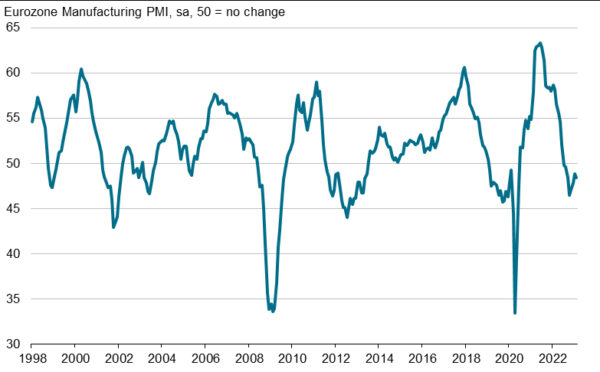
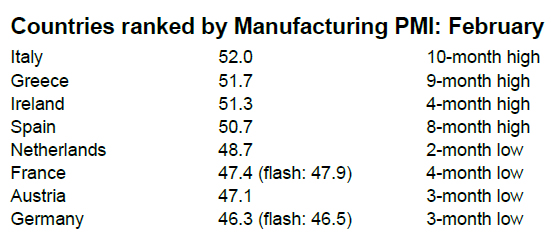
Full release here.




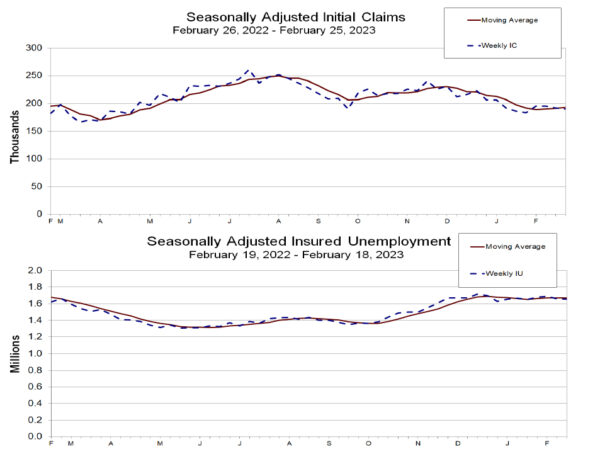
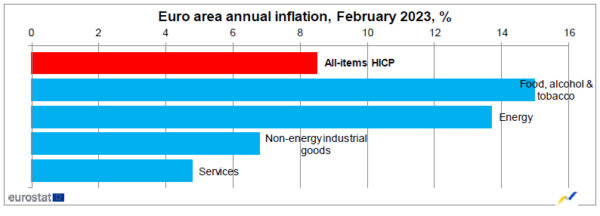
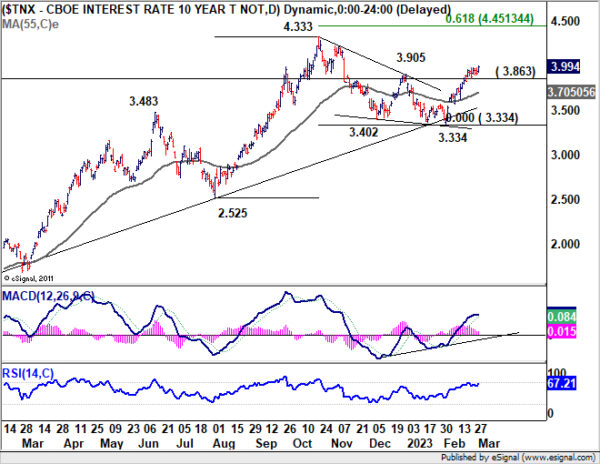
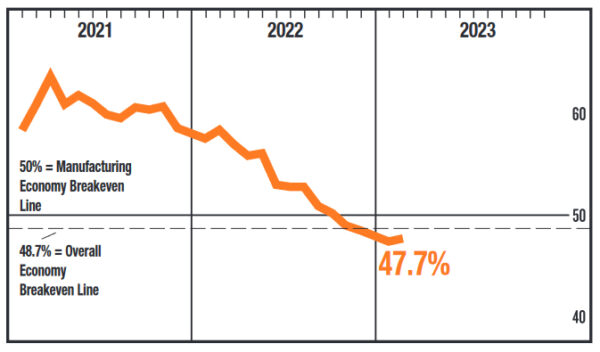
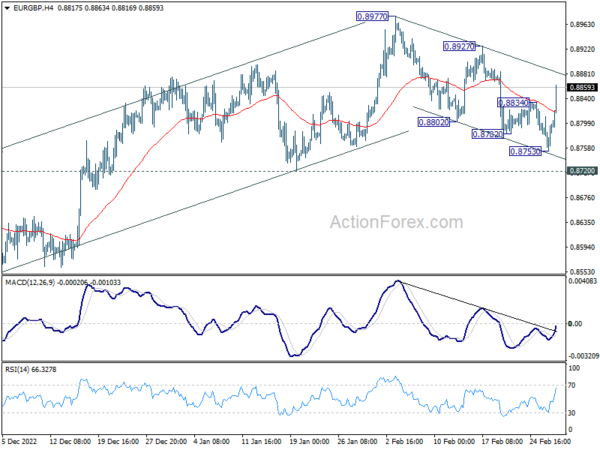
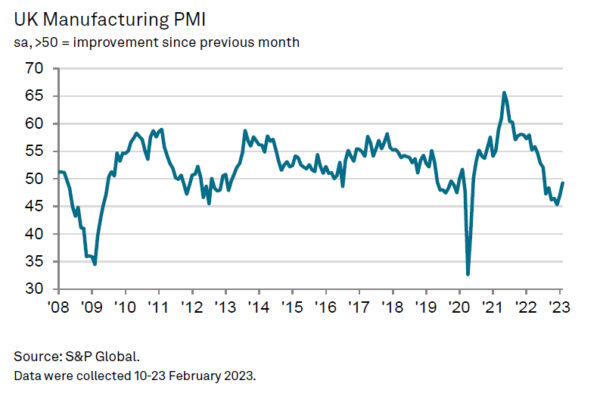


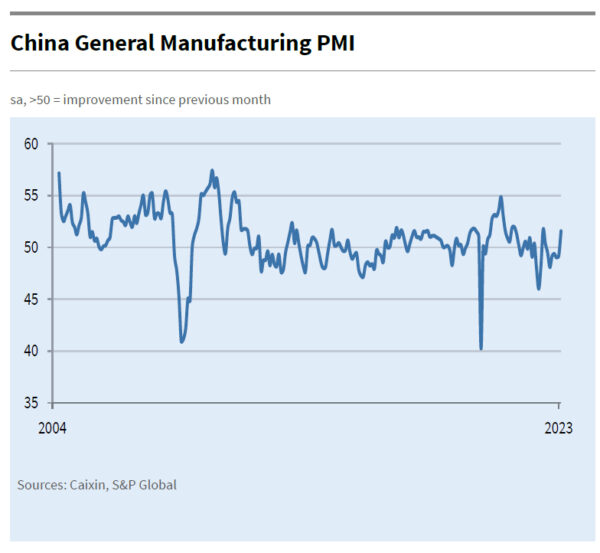
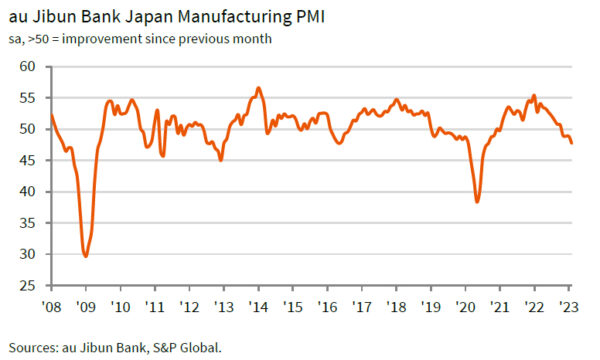
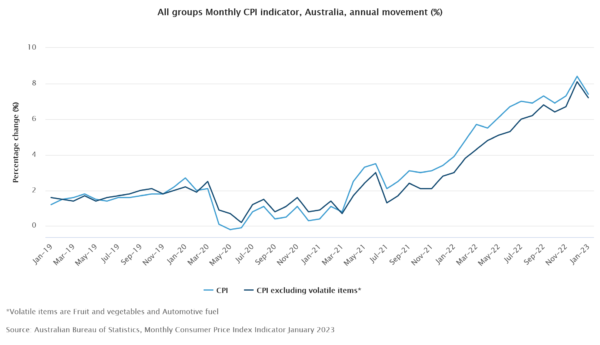
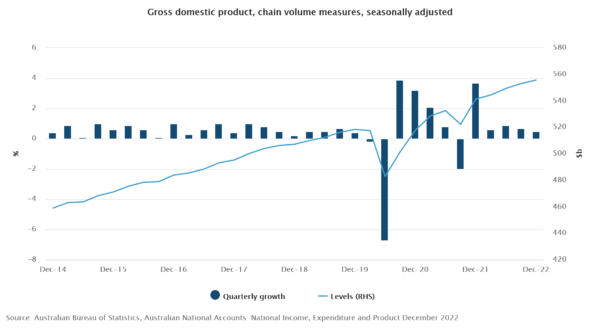

BoE Pill: Current momentum in economic activity may be slightly stronger than anticipated
In a speech, BoE Chief Economist Huw Pill said that “current momentum in economic activity may be slightly stronger than anticipated.”
“CPI inflation is projected to fall to below the 2% target by the end of the forecast horizon”, he said. But “there are considerable uncertainties around this outlook.”
“Upside risks arise in large part from the possibility that domestic inflationary pressures prove more persistent than anticipated, owing to so-called ‘second round effects’ in price, cost and wage setting behaviour,” he explained.
“The latest data for private sector regular pay growth – which was published after the MPC’s forecast was finalised – surprised slightly to the upside.”
Nevertheless, “some high-frequency indicators of wages have fallen quite sharply recently”.
“The MPC will continue to monitor indications of persistence in domestic inflationary pressures closely, with a focus on developments in the labour market, in wage dynamics, in services price inflation and in measures of underlying inflation and inflation expectations.”
Speaking notes and slides